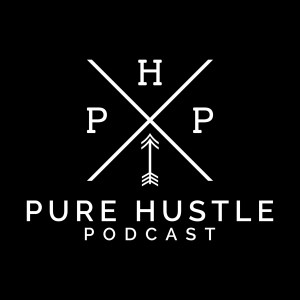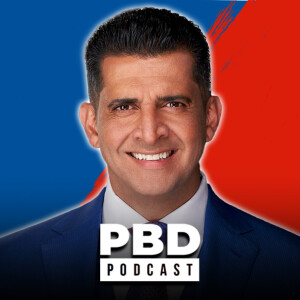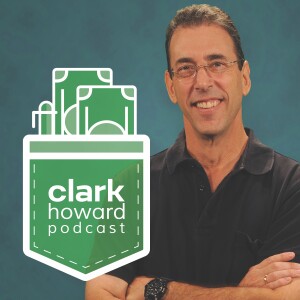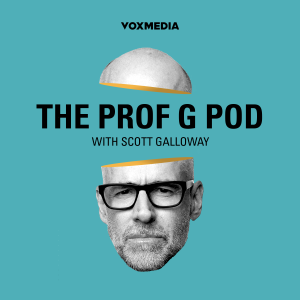

Episode List

Are You Relying on the Right Tools?
In this episode of The New CISO, host Steve Moore speaks with Dr. Timo Wandhöfer, Group CISO and Head of Information Security & Business Continuity Management at Klöckner & Co, about the evolving responsibilities of modern CISOs and why influencing—not just convincing—stakeholders is essential for success.From his early career as a researcher in computer science to leading global security and resiliency efforts in the steel industry, Timo shares how critical thinking, skepticism, and cross-functional collaboration shaped his leadership style. He reflects on the dangers of overconfidence in detection, the risks of over-relying on tools, and the lessons learned from merging information security with business continuity. Timo also explores how AI can both accelerate remediation and introduce new risks, and why resilience planning and transparent communication are at the core of effective leadership.Key Topics Covered:The evolving role of the CISO: from protection to resilience and adaptabilityHow research skills translate into critical thinking and cross-functional collaborationWhy overconfidence and lack of visibility remain major pitfalls in security programsThe importance of transparency, maturity, and asset inventory for strong defensesResiliency planning: ransomware recovery, crisis management, and operating modelsInsider threat investigations and the role of HR, Legal, and IT in responseThe shift from convincing to influencing stakeholders through dialogueThe promise and risks of AI and automation in remediation and decision-makingWhy today’s CISO must be a communicator, storyteller, and business leaderTimo’s journey highlights how resilience, adaptability, and influence define the “new CISO.” His insights provide a roadmap for leaders who want to strengthen security programs, build trust with stakeholders, and guide their organizations with both technical and business acumen.

Teachable Moments: How to Learn from Career Challenges
In this episode of The New CISO, host Steve Moore speaks with Steve Lodin, VP of Information Security at Sallie Mae, about the career challenges that shaped his leadership style and the lessons he’s learned across decades in cybersecurity.From breaking into his high school to experiment with Apple II computers to leading global security teams in Europe, Steve shares the pivotal experiences that defined his career. He opens up about career missteps, the importance of asking the right questions before accepting a new role, and how succession planning and crisis preparation are critical for every security leader. Steve also reflects on how medical emergencies, breach response, and shifting industries—from automotive to healthcare to financial services—taught him resilience, adaptability, and perspective.Key Topics Covered:Early career pivots, from engineering to cybersecurity leadershipLessons learned from career missteps and short-lived rolesThe five factors Steve now evaluates before taking a new jobSuccession planning and preparing teams to lead during emergenciesWhy tabletop exercises and exposure to executives matter for resilienceManaging stress, staying calm, and keeping perspective in high-pressure rolesThe long-tail business impact of breaches beyond immediate costsWhy financial services foster collaboration and innovation in securityThe importance of mentoring and introducing students to cybersecurity careersSteve’s story reveals why the most valuable lessons often come from challenges, not successes. His insights provide a roadmap for CISOs and aspiring leaders who want to navigate setbacks, lead with composure, and build stronger teams for the future.

How to Score a Security Role — Without Collecting Certifications
In this episode of The New CISO, host Steve Moore speaks with Marius Poskus, Chief Information Security Officer at Glow Financial Services and creator of the Cyber Diaries podcast. Marius shares his journey from physical security into cybersecurity leadership—and how he did it without relying on traditional certifications.Marius reflects on how self-directed learning, mentorship, and a strong personal brand helped him pivot careers and thrive in the FinTech space. He explains why the security industry needs to stop glorifying certifications, how to break in through SOC roles, and what truly makes a candidate stand out in interviews. From coaching new talent to advising startups on go-to-market strategies, Marius emphasizes that attitude and aptitude matter far more than credentials.Key Topics Covered:Why Marius walked away from a career in physical security—and how that experience shaped his cyber pathThe critical difference between certification collecting and real-world skill developmentWhy most entry-level cybersecurity roles are in SOCs—and how to leverage thatHow sharing your learning journey online builds credibility and unlocks job opportunitiesThe two A’s that matter most when hiring: attitude and aptitudeCommon mistakes startups make when targeting CISOs and building security toolsThe growing risks of “AI-washing” and what real AI innovation should look likeWhy mentorship only works when mentees are willing to put in the workHow to shift from security awareness “stick” tactics to culture-based collaborationWhat it means to build a personal brand that outlasts your job titleMarius’ story proves that cybersecurity success doesn’t come from certificates—it comes from curiosity, consistency, and community. Whether you’re just starting your career or leading a security team, this episode will inspire you to focus on what really moves the needle.Marius Poskus Podcast - Cyber Diaries Podcast

Ask the Right Questions: How Building Trust Brings Value
In this episode of The New CISO, host Steve Moore speaks with Aleksandar Radosavljevic, Global CISO at Global Fashion Group, about building trust, measuring resilience, and the evolving role of the security leader.Aleksandar shares how his unexpected pivot from electrical engineering to cybersecurity sparked a passion for protecting systems and solving problems. With over two decades of experience across pharma, manufacturing, and tech, he offers insights into how security leaders can establish trust, drive business value, and focus on what really matters.The conversation covers the art of starting strong in a new CISO role, navigating interviews with curiosity and care, and avoiding common traps like overcomplicating metrics or chasing the latest tools without mastering the basics.Key Topics Covered:Why pharma’s mission-driven work made a lasting impact on AleksandarCareer advice for cybersecurity newcomers: follow learning, not just industryHow CISOs can build early trust by listening and understanding the businessRed flags and green lights during the CISO interview processWhy being challenged in an interview signals a healthy security cultureThe problem with vanity metrics—and what to track insteadAleksandar’s favorite KPIs: time to detect, respond, and contain incidentsThe role of situational awareness in building cyber resilienceHow simplifying language helps CISOs align with executive teamsWhy mandate and mindset matter more than reporting linesAleksandar’s story is a reminder that cybersecurity leadership is about more than tools and tactics—it’s about trust, transparency, and transforming security from a blocker into a true business enabler.

The Challenge of Securing Critical Infrastructure
In this episode of The New CISO, host Steve Moore speaks with Keith Price, Chief Security Officer at National Highways, about the evolving responsibilities of modern security leaders and the critical role of convergence between cyber, physical, and people security.Keith shares real-world stories from his work protecting England’s strategic road network—used by over four million people daily—and explains why understanding both legacy infrastructure and cutting-edge technology is essential for building a resilient security strategy. From managing insider threats and recovering stolen radar equipment to championing mental health and developing junior talent, Keith offers a holistic approach to leadership in critical infrastructure.Key Topics Covered:How converging physical, cyber, and personnel security leads to stronger protectionReal-life insider threat examples—and how sensors helped prevent major damageThe challenge of managing decades-old asset tracking systems across regionsWhy availability and integrity of data now outweigh confidentiality in certain sectorsHow Keith’s team detected stolen highway radar for sale on eBayThe importance of empathetic leadership and supporting mental health in security teamsHow "Cyber Coffee" sessions create safe spaces for vulnerability and connectionUpskilling IT staff into cybersecurity roles through “pay-it-forward” learningThe case for offering security-as-a-service to small but critical supply chain partnersKeith’s insights reveal why successful security leadership requires more than just technical knowledge—it demands communication, humility, and a deep understanding of human behavior. This conversation is a must-listen for any security professional working to bridge silos and lead with impact.
Create Your Podcast In Minutes
- Full-featured podcast site
- Unlimited storage and bandwidth
- Comprehensive podcast stats
- Distribute to Apple Podcasts, Spotify, and more
- Make money with your podcast












